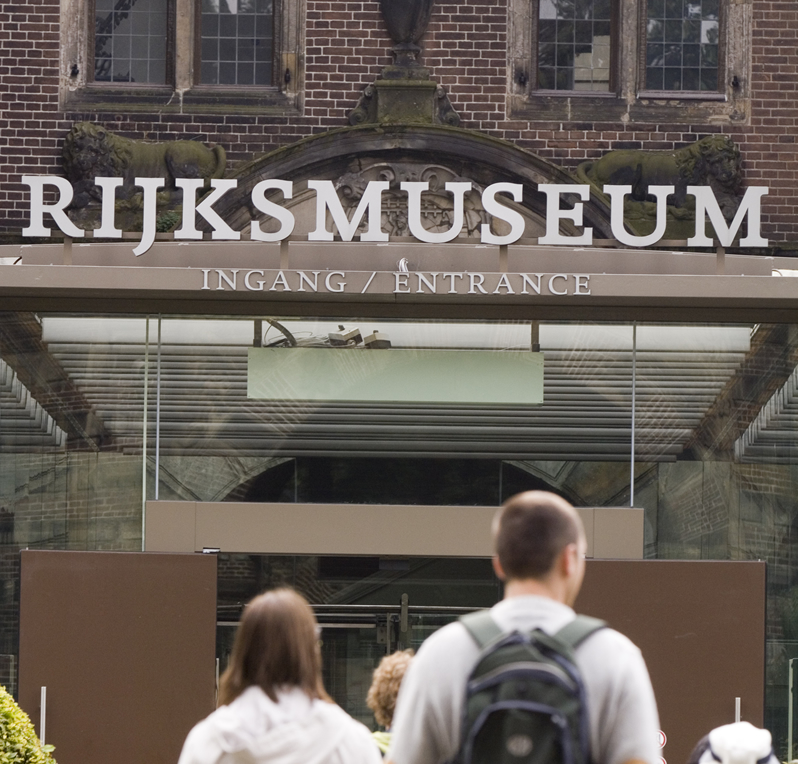Rijksmuseum - The Netherlands
The Netherlands’ top treasure house, the Rijksmuseum (pronounced ‘rikes’), is among the world’s finest art museums. With over 1.5km of galleries, it packs in around 8000 artworks with paintings by homegrown heroes Rembrandt, Vermeer, and Van Gogh, as well as plenty of other masterpieces.
The museum is spread over four levels, from Floor O (the central atrium) to Floor 3; pick up a map from the information desk. You can see the highlights in a few hours, but you may want to allocate much longer to take it all in. A Michelin-starred restaurant and a cafe, shop, library, and garden are on-site to break up the visit.
Famous Paintings
It’s best to start your visit on Floor 2, which contains the collection’s highlights, with its Golden Age masterpieces in the Gallery of Honour. Intimate paintings by Vermeer and De Hooch allow insight into everyday life in the 17th century, while Rembrandt’s The Night Watch (1642) is the rock star of the museum, with perennial crowds in front of it. Initially named Archers under the Command of Captain Frans Banning Cocq (the militia’s leader), The Night Watch title was bestowed years later due to a layer of grime that gave the impression it was an evening scene. It has since been restored to its original colors.
Don’t miss Vermeer’s dreamy Milkmaid (1660, also called The Kitchen Maid), The Little Street (1658) depicting houses in Delft, and Woman in Blue Reading a Letter (1663).
You’ll find several Rembrandts on this floor, including his unflinching self-portrait as the Apostle Paul and The Jewish Bride (1665), which impressed Van Gogh so much that he declared he would give up a decade of his life to sit before the painting for a fortnight with only a crust of bread to eat.
Other highlights at the Rijksmuseum include The Merry Family (1668) by Jan Steen, who became renowned for painting chaotic households to convey moral teachings, and the famous Portrait of a Girl Dressed in Blue (1641) by Johannes Cornelisz Verspronck, depicting a child in her Sunday best.
Don’t miss Van Gogh’s Self-portrait (1887) on the first floor and the Battle of Waterloo (1824) by Jan Willem Pieneman, the largest painting in the museum that takes up almost an entire wall.
Other museum highlights
Aside from the collection of masterpiece paintings, other must-sees include the Delftware (blue-and-white pottery); mind-blowing intricately detailed dollhouses; the Asian Pavilion with its first-rate artworks from China, Indonesia, Japan, India, Thailand, and Vietnam; and Cuyper’s library, an Escher-like towering book-lined space – view it from the balcony on Floor 2.
The Garden
The sculpture-studded gardens, the ‘outdoor gallery,’ host big-name sculpture exhibitions at least once a year. You can stroll for free amid the roses, hedges, and fountains. There’s also a cool greenhouse.
Museum shop
Stocking a great range of quirky items, Delftware, art prints, books, and more, the museum shop is perfect for browsing and picking up a souvenir or gift for someone.
History of the Rijksmuseum
The Rijksmuseum was initially conceived to hold several national and royal collections and was inspired by French museums such as the Louvre. Its precursor, The National Art Gallery, was founded in 1800 and was located in Den Haag (The Hague). 1808, Napoleon moved the national art collection to the Royal Palace on Dam Square in Amsterdam, the country’s new capital. They joined some of the country’s national artistic treasures, such as The Night Watch by Rembrandt.
The collection was moved several times before a contest was held to find someone to design the building to house these grand artworks. Architect Pierre Cuypers – the principal designer for Centraal Station, too – was chosen to design the building, and construction began in 1876. The result is a stunning mix of neo-Gothic and Dutch Renaissance styles. The museum officially opened to the public in 1885.
From 2003 to 2013, the museum underwent a €375 million ($443 million) renovation. Opening hours and tickets
The museum is open daily from 9 am-5 pm, including national holidays. To avoid the biggest crowds, arrive before 10 am or after 3 pm.
Tickets need to be booked on the website in advance to reserve a timeslot. Entry costs €20 for adults, and those 18 years and under go free. Amsterdam and Museumkaart cardholders also get in free.
Nearby restaurants
Treat yourself to a gourmet lunch or dinner at Rijks, the Michelin-starred museum restaurant, set in a beautiful space with huge windows and high ceilings. It’s open for lunch from Wednesday to Sunday and dinner from Tuesday to Sunday.
If you fancy something a little less formal, a cafe on the mezzanine in the excellent entrance atrium serves light lunches.
Black-and-white awnings and a wrought-iron balcony set the scene at l’Entrecôte et les Dames, which has a simple menu of steak or fish. Go for the entrecôte (premium beef steak) at dinner or a steak sandwich for lunch, and save room for delicious desserts.
Source

